My Guide to Eating Dim Sum
Dim Sum could be described as the Chinese version of Spanish tapas. Small, visually-delightful, mouth-watering steamed morsels are served up on tiny plates to be eaten solo or shared among family and friends. These personally-selected collections of little dumplings eaten with piping hot Chinese tea will leave you happily filled and glowing in no time.
Considered gourmet cuisine and quite labor-intensive to create, dim sum can be eaten for breakfast, lunch or dinner. Most dim sum dumplings are filled with pork or seafood but others contain only vegetables. Besides various steamed dumplings, there are usually a few rice dishes, cooked chicken feet, small pots of meat chunks and tiny bowls of soups to choose from.
Sweet steamed bean-paste buns, miniature custard pies, deep fried dough balls and other traditional Chinese sweets top off dim sum meals if desired.
Dim Sum has its own unique etiquette and procedures for ordering and eating, which are quite different from other Asian cuisines, even other Chinese foods. Stepping into a dim sum restaurant for the first time can be rather bewildering and leave you feeling embarrassed, foolish and vulnerable since it’s generally not clear how to proceed.
But dim sum is absolutely delicious, so those who step courageously into a dim sum restaurant and take the risk will be well rewarded for their curiosity.
I’ve written this post to guide to through your first dim sum experience.
I’m a huge fan of dim sum, ever since I first tried it in Penang, Malaysia’s lovely traditional dim sum only restaurants. I can remember my first tentative steps into the restaurant and wondering what on Earth to do with the two tiny cups resting in a pot of scalding-hot water.
I was equally bewildered looking at the huge steaming bamboo trays full of a diverse selection of cute little dumplings. What the heck was in each of them? Would I select ones I loved or hated? What would I be eating?
Luckily, one or two of the staff could speak a smattering of English, so they were able to tell me in basic terms what they were. “pork” “prawn” “fish” “vegetable”. Other dumplings they couldn’t describe in English, so I just had to sample them and find out for myself.
Here’s what I’ve learned:
Ordering Dim Sum
Dim Sum restaurants vary in ordering style. Very high-class restaurants often have menus with photos and descriptions of each dim sum on offer. Customers simply order at their table from the menu, just as they would at most other restaurants.
But more mainstream dim sum shops do things quite differently. I’ve seen two different styles. For one style, the shop has a stack of large, round bamboo steam trays situated at the front of the shop, usually near the register.
To order, customers go to the bamboo baskets, where a staff member will lift off the lid for them to look inside and make their selection by pointing. Dim sum savy customers who know the name of the dim sum, can ask for it instead. For that matter, if you know the names of the dim sum you want, you can simply sit at a table and order from a waitress/waiter when they come around. They’ll bring the dim sum to you.
My favorite style of dim sum restaurant uses huge portable bamboo steam stacks, which the staff roll around through the restaurant. They stop at each table and lift the steaming lids for customers to order right at their tables. This style is so different from any other type of cuisine in the world that I find it really exciting and fun.
These restaurants also often have a different kind of layered cart filled solely with sweets. It’s much like dessert carts used at some upscale European restaurants.
Some restaurants use an alternate on this theme. Instead of wheeling around big carts of steamers, the staff carry around single trays full of dim sum for customers to select from at their tables.
Ordering Tea
You will also order tea. This is done at your table by a waiter/waitress, who will ask what you want to drink. Most restaurants serve several varieties of Chinese tea. If you’re not familiar with them, just order the standard ‘Chinese tea’. Another delicious one is Jasmine tea.
Types of dim sum
As mentioned above, most dim sum consist of dumplings filled with either pork or seafood. The most common and popular of all is called ‘shu mai’, minced pork wrapped in dumpling, steamed. One plate of shu mai consists of two or three pieces.
Other popular dim sum are filled with prawn and various other ingredients. Other common ingredients are chestnuts, fish paste (like fish sausage). Vegetable dim sum are usually easy to spot from their colors: green leafy veggies, shredded orange carrot, white shredded Chinese radish.
Meat dishes without dumplings included chicken claws in dark sauce, tiny pots of meat chunks, chunks of fish and/or seafood.
Sweet dessert dim sum include steamed buns, ‘carrot cake’, custard tarts and flaky pastries. Popular steamed buns (called pao) are filled with either white bean paste, red bean paste or lotus cream. These sound very odd to western palates, but they are all delicious, creamy, healthy, low-fat and not too sweet.
So called Chinese ‘carrot cake’ is one dish for which the English translation totally escapes me. It’s not made from carrots. It’s not orange. It doesn’t have cake consistency. And it’s not sweet!
Instead, Chinese ‘carrot cake’ is a dense whitish block the texture of dense mashed potatoes, sort of. It’s fairly flavorless and decidedly un-sweet. I personally can’t understand the appeal, though it’s not awful either.
How to Eat Dim Sum
After you’ve selected your favorite dim sum or some new varieties, you’ll have several little trays of beautiful dumplings sitting on your table in front of you. If you’re eating with friends, the normal arrangement is to place all the dim sum in the center of the table to be shared with everyone.
Dim Sum is eaten with chopsticks. Most likely those are the only eating utensils available. They are usually already setting on the table along with a selection of sauces and super tiny sauce dishes, much like western restaurants have salt, pepper, ketchup and napkins already placed on the tables
Before digging into your delicacies, grab one of the tiny sauce dishes and pour some soy sauce in it. If you want any of the other sauces, fill separate dishes with the ones you like. Then grab a pair of chopsticks and you’re ready to eat.
Some dim sum will be ‘dry’ and others cooked in some sort of thick sauce. Certain dim sum get doused with sauces by the staff when you order.
When you’re ready to eat, any dry dim sum should be dipped in soy sauce, or another sauce you prefer. Dim Sum already served in their own sauces should simply be eaten as is.
Most dim sum dumplings will stick to each other. So it’s a bit of a task to separate them with your chopsticks as you pick them up. But not too difficult. Try using the chopsticks like a knife between dumplings if they’re being pesky. Then just lift up the cute little morsel, dip it in sauce, and pop it in your mouth. Yummy!
Drinking Chinese Tea
At dim sum restaurants, tea is served in a small attractive Chinese tea pot along with a bucket filled with freshly boiled water and two tiny tea cups resting on their sides in the water.
What to do with those?
The cups are served in hot water to heat them up before pouring tea into them. The correct procedure is to turn the cups around in the water, either with a pair of chopsticks or your fingers, making sure all sides of the cup have been warmed. Then lift the cup out of the water, tipping out any excess water, and place it on the table.
When the tea is brewed to your liking, simply pour tea into the cups, as usual. Note that a large portion of loose tea leaves has been placed in the pot, which means that as the minutes tick by the tea is becoming darker and stronger. If you prefer weaker tea, be sure to pour it as quickly as possible. Otherwise, you’ll have a very dark, bitter or sharp tasting tea on your hands.
Also note that Chinese tea is not drunk with sugar, sweetener or milk added. It’s not likely the restaurant will have any either. I suggest drinking it plain like the Chinese patrons do. That’s probably your only choice anyhow.
Paying
Dim Sum restaurants also vary as to how they keep track of what customers’ have eaten, tallying up the bill and payment. There are two common systems I’ve encountered in Penang.
One system is for staff to count the empty dim sum plates left on your table. Each plate, aka eaten dim sum, has a particular price. The staff know the value of each size plate and charge accordingly.
When you’re ready to pay, signal to a staff to come to your table. He/she will look at your empty plates, tally the total in her/his head and tell you the price. It’s the same system used at conveyor belt sushi restaurants, in case you’re familiar with that.
The second system uses a paper bill listing every dim sum and tea available at the restaurant, written in Chinese. Whenever you select a dim sum, the waiter will make a tick mark on your bill and indicate how many you got. They’ll also mark the tea you order.
If you add any more dim sum later, like one more of your favorite or some sweets at the end of the meal, the waiter will add another tick mark to your bill. With this system, you might be expected to pay the staff at your table or else proceed to the cash register. If a cash register is readily visible, you should probably just take your bill there.
And that’s it!
Happy Dim Sum eating!
——————————————————————-
You might also like:
Penang’s Delightful Local Homemade Sweets
Secret Eating Spot in Kuala Lumpur, Malaysia
—————————————————————————————————————————


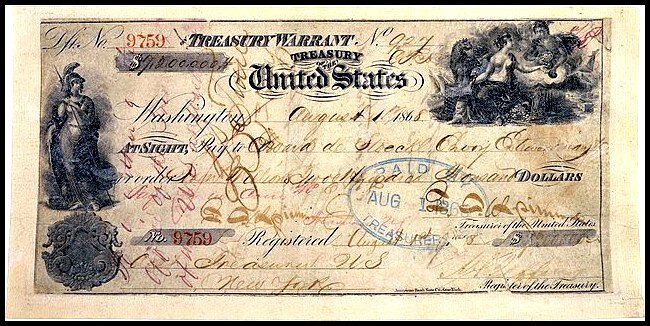




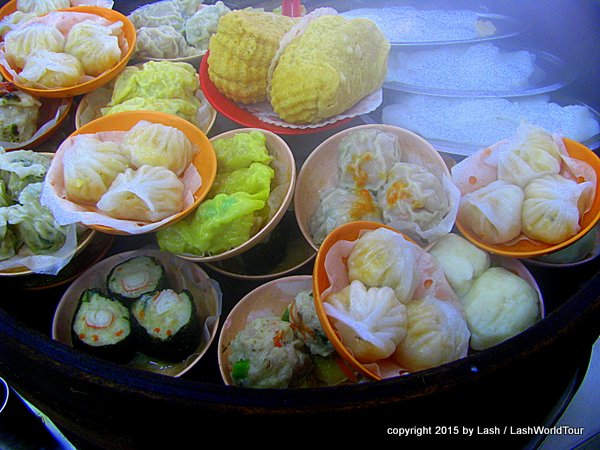
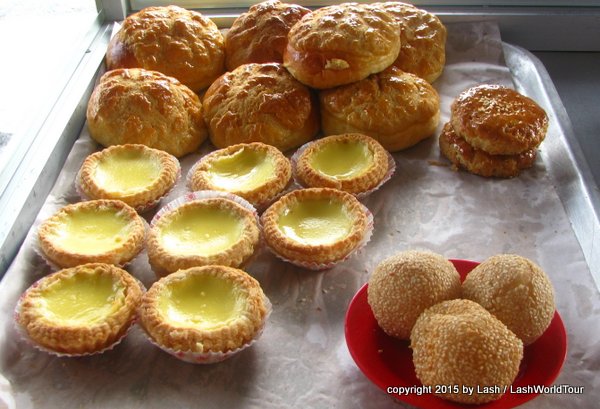
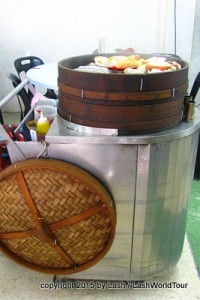
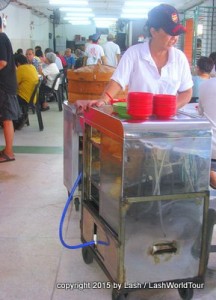
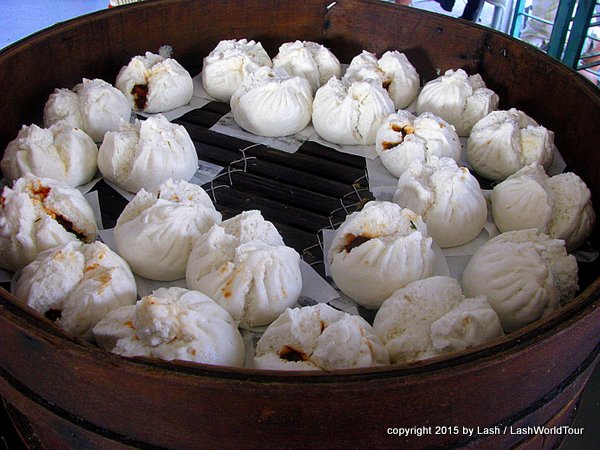
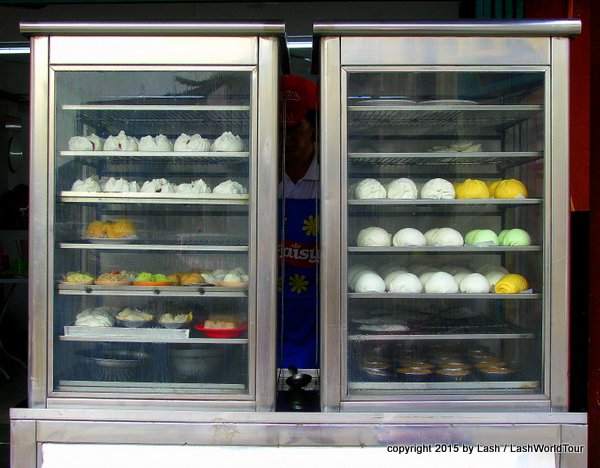
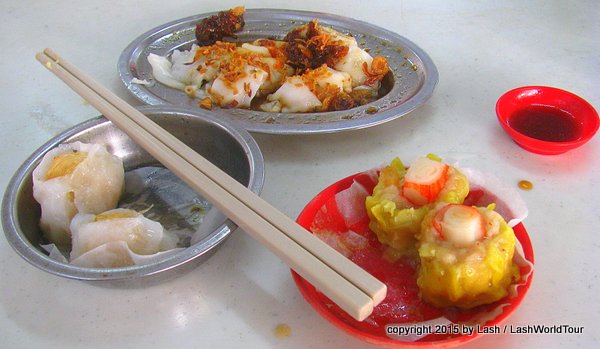
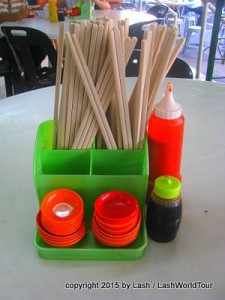
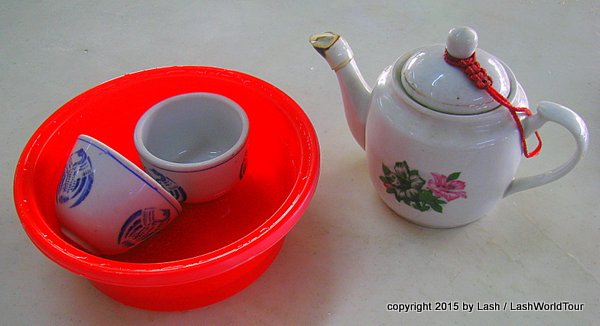
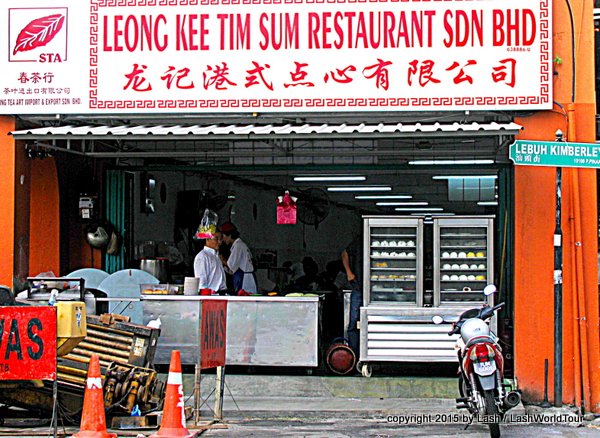
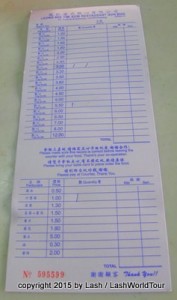



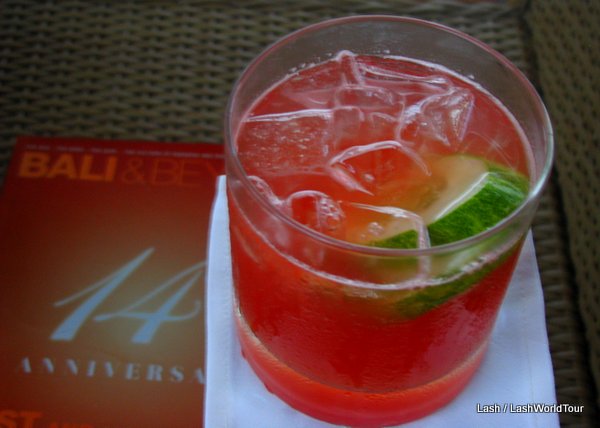

 Hi! I'm Lash, an American nomadic world traveler who's been traveling solo since 1998. I’m passionate about traveling the world nomadically and then sharing it all with you. I hope to inspire you to travel the world, to entertain you with tales from the road, and to help you reach your travel dreams. Welcome!
Hi! I'm Lash, an American nomadic world traveler who's been traveling solo since 1998. I’m passionate about traveling the world nomadically and then sharing it all with you. I hope to inspire you to travel the world, to entertain you with tales from the road, and to help you reach your travel dreams. Welcome! 



